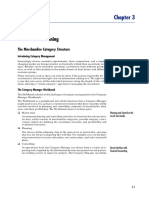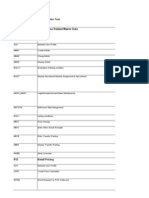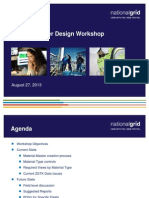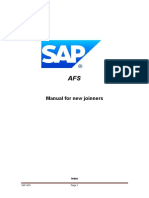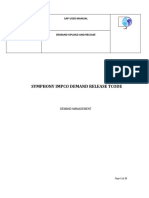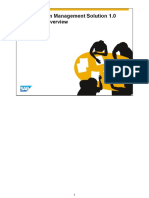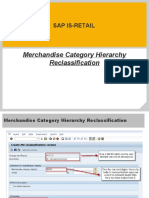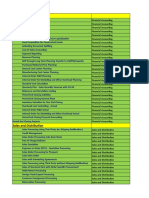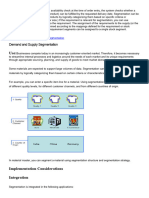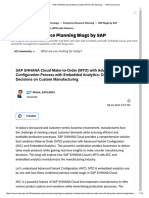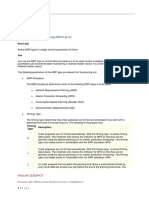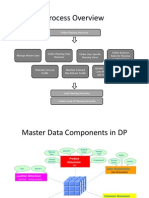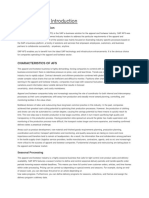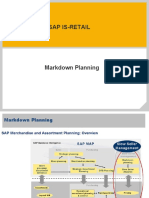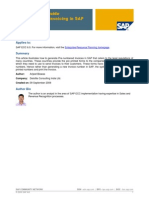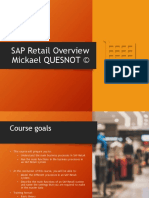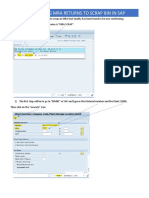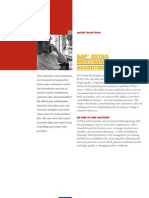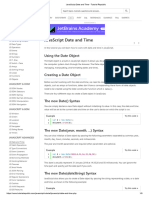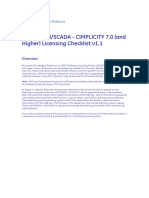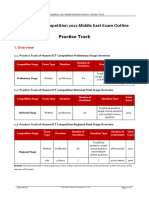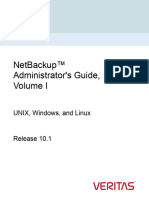0% found this document useful (0 votes)
135 views16 pagesSAP For Retail - Dev Projects - Part 1 of 3
This document provides an overview of SAP solutions for retail development projects, focusing on merchandise and assortment planning, POS data management, forecasting and replenishment, and profit center analytics. It discusses the key challenges retailers face in these areas and how SAP solutions address them through integrated strategic, merchandise, assortment, and store planning as well as centralized POS data management to improve consumer insights, store measurement, and supply chain management.
Uploaded by
Allan Fabian Santos SouzaCopyright
© © All Rights Reserved
We take content rights seriously. If you suspect this is your content, claim it here.
Available Formats
Download as PDF, TXT or read online on Scribd
0% found this document useful (0 votes)
135 views16 pagesSAP For Retail - Dev Projects - Part 1 of 3
This document provides an overview of SAP solutions for retail development projects, focusing on merchandise and assortment planning, POS data management, forecasting and replenishment, and profit center analytics. It discusses the key challenges retailers face in these areas and how SAP solutions address them through integrated strategic, merchandise, assortment, and store planning as well as centralized POS data management to improve consumer insights, store measurement, and supply chain management.
Uploaded by
Allan Fabian Santos SouzaCopyright
© © All Rights Reserved
We take content rights seriously. If you suspect this is your content, claim it here.
Available Formats
Download as PDF, TXT or read online on Scribd
/ 16
